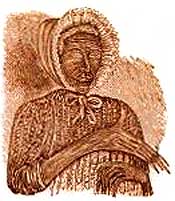The Joice Heth ExhibitThe Lost Museum Archive

Barnum launched his career in the mid -1830s with his exhibition of Joice Heth, an elderly enslaved African-American woman. Heth had been exhibited by others with little success, but Barnum brought her to New York, advertised her age as 161, and claimed that she had been nursemaid to the young George Washington. Barnum and his partner, Levi Lyman, exhibited Heth in taverns, inns, museums, railway houses, and concert halls in cities and towns across the northeast for seven months, beginning in 1835. With Joice Heth, Barnum demonstrated two of the techniques that would mark his showmanship in the decades to come: manipulation of the popular press and the use of scientific "experts" to evaluate his exhibits. Joice Heth was a popular subject in the pages of the "three-penny press" (often referred to by historians as the penny press), which catered to urban working-class readers and challenged the cultural authority of more genteel (and more expensive, at six cents per copy) newspapers. When ticket sales tapered off, Barnum wrote an anonymous letter to a Boston newspaper claiming that Heth was a fake -- that she was actually a machine, made up of whale bone and old leather. Crowds flocked again to see her. Heth died of natural causes in 1836. Although a prominent doctor performed an autopsy and concluded that Heth was no more than 80, Barnum countered that the corpse was a fake and continued to claim that Heth was still alive and performing elsewhere. The Heth hoax, frequently invoked by his critics, dogged Barnum throughout his subsequent career as a showman. Barnum’s public association of a slave woman with George Washington coincided with the beginning of organized opposition to slavery; the American Anti-Slavery Society was founded in 1833 and gained members rapidly through the rest of the decade.